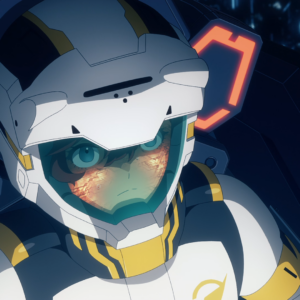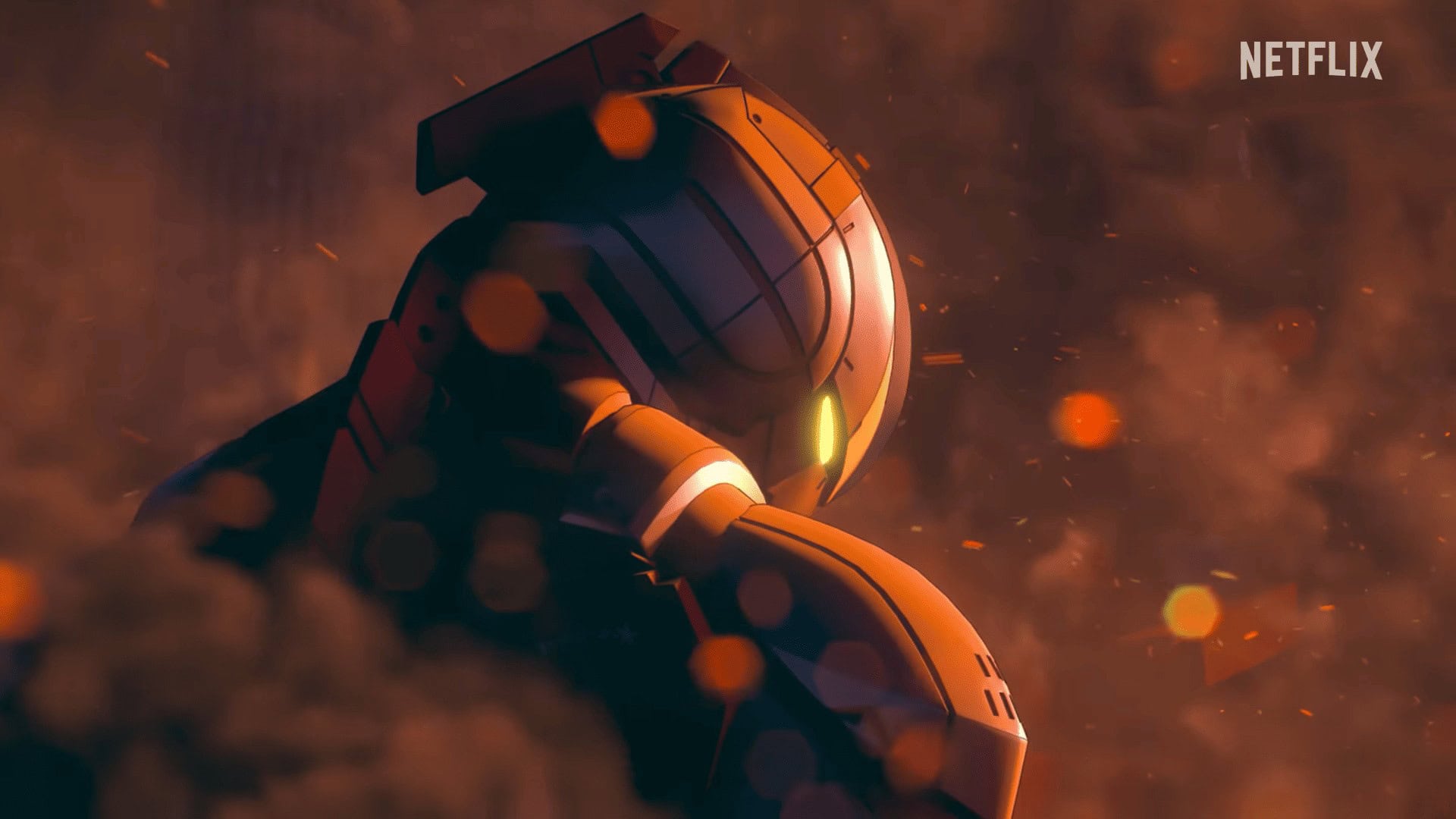
Anime Review: ULTRAMAN FINAL – Awaken The Light Within
He is awakening…to the true Light within him
Ultraman is one of the oldest and most popular Tokusatsu franchises, not only in Japan but also around the world, and Ultraman‘s popularity has spawned numerous spin-offs, one of which is the 3DCG Ultraman anime series produced by Production I.G in partnership with Sola Digital Arts and released on Netflix – which was based on the manga by the Eiichi Shimizu duo. This series is one of my “guilty pleasures” – even though I know it’s far less than the manga that inspired it, I still love it. But season two, a season that even I have to admit is terrible, has made me almost lost all faith in this series. Yet the third season landed on Netflix and proves that Ultraman shines most when all hope is lost.
Ultraman ONA (Original Net Animation – Anime originally released online) is inspired by the ULTRAMAN manga by the Linebarrels of Iron duo Eiichi Shimizu and Tomohiro Shimoguchi, revolving around the son of the legendary Ultraman “host” Shin Hayata. Shinjiro Hayata discovers that he possesses extraordinary superpowers, and that his father was once Ultraman, which leads to him having to fight alien criminals as the new Ultraman, alongside the new SSSP and the other Ultramen.
The reason why I said this anime “is inspired” and not “adapted” from the source material is because Ultraman ONA minimizes many elements of plot and characters compared to the manga, even omitting many details from the manga, because each season has only 12 episodes at most. This is perhaps the most fatal weakness, as the writers are forced to fully deliver long story arcs in just a few episodes, hence not able to make the most of their talents. Fortunately, in the FINAL season, writer Kento Shimoyama seems to have more creative freedom: although he still borrows a few simplified details from the manga, much of the plot is written by himself.
In addition, the third season’s plot is one story arc spread over twelve episodes, as opposed to the first season with many arcs being crammed into twelve episodes and the second season with a long arc delivered in a short span of time of six episodes. Thanks to the above two favorable factors, Ultraman FINAL escaped the quagmire of seasons one and two, if compared in terms of plot.
The reason why I said this anime “is inspired” and not “adapted” from the source material is because Ultraman ONA minimizes many elements of plot and characters compared to the manga, even omitting many details from the manga, because each season has only 12 episodes at most. This is perhaps the most fatal weakness, as the writers are forced to fully deliver long story arcs in just a few episodes, hence not able to make the most of their talents. Fortunately, in the FINAL season, writer Kento Shimoyama seems to have more creative freedom: although he still borrows a few simplified details from the manga, much of the plot is written by himself.
In addition, the third season’s plot is one story arc spread over twelve episodes, as opposed to the first season with many arcs being crammed into twelve episodes and the second season with a long arc delivered in a short span of time of six episodes. Thanks to the above two favorable factors, Ultraman FINAL escaped the quagmire of seasons one and two, if compared in terms of plot.
//PLOT//
The pace, in my opinion, is quite slow, as most of the season time focuses on the psychological development of the two characters Shinjiro and Rena, without having any praiseworthy fight. Even so, I still appreciate the “leverage” of the plot is more invested (compared to last two seasons): there are six out of twelve episodes used to set up the challenge for the main character.
The tension in the early episodes is much greater than in other seasons as the protagonist has more at stake: Shinjiro is haunted by his dream of fighting Zetton, leading to the loss of control over his powers, then he’s turned away by the public and even his teammates were suspicious of him, on top of having to witness his father being murdered right with his very eyes. The episodes setting up the challenge for Shinjiro are indeed rather laggy and boring, but for an easygoing viewer like me it’s worth the tension required in the series.
Starting from Shinjiro’s spiritual journey, the third season gradually becomes more interesting for me. The way Shinjiro receives help and affection from both strangers and acquaintances, learns what it’s like to be an Ultraman, and gradually matures, is truly a heartwarming and inspiring way of character development. Besides, the quality of the filmmaking art in these episodes also elevates my emotions when watching. For example, when Shinjiro talked to the nurse at Sagayoshi Hospital about his father, the composition, lighting, and color scheme of the scene created a feeling of calmness and relaxation, in contrast to the intense context of the season.
Summing up Shinjiro’s character arc, the season’s climax is a satisfying payoff for me. The young Ultraman’s awakened power, responsibility, and mature heart were rewarded by the public’s faith, helping him defeat Edo composed a classic heroic ending. When the heroic hero fights hard to protect, despite everything going against him, then his actions convince the hearts of the public, from which the hero gets his strength back from human’s faith is a writing that always makes me feel emotional. If I had to convince someone to watch Ultraman FINAL, I would always recommend this scene.
Although there are many improvements, the plot of the series still has many shortcomings. One thing that annoys me during the 12 episodes is that things sometimes go too smoothly for both sides. You can easily see this in the early episodes, when the SSSP, the Ultramen, and the citizens are all tricked by Mephisto so easily, as if they weren’t trying to resist at all.
Even some of the main characters were trashed on to ensure the convenience of the plot, as well as to save the spotlight for Shinjiro and Rena. Seven, Taro and Ace are not only not able to shine satisfactorily, but also are forced to be jobbers and to behave in a more “dumb” manner than usual, especially for someone as sharp as Dan Moroboshi. These shouldn’t have affected how good the season is, but because they’re too hard to ignore and too annoying, these turn into huge negatives. And, yeah, the plot twists are pretty predictable so I don’t want to mention them.
The pace, in my opinion, is quite slow, as most of the season time focuses on the psychological development of the two characters Shinjiro and Rena, without having any praiseworthy fight. Even so, I still appreciate the “leverage” of the plot is more invested (compared to last two seasons): there are six out of twelve episodes used to set up the challenge for the main character.
The tension in the early episodes is much greater than in other seasons as the protagonist has more at stake: Shinjiro is haunted by his dream of fighting Zetton, leading to the loss of control over his powers, then he’s turned away by the public and even his teammates were suspicious of him, on top of having to witness his father being murdered right with his very eyes. The episodes setting up the challenge for Shinjiro are indeed rather laggy and boring, but for an easygoing viewer like me it’s worth the tension required in the series.
Starting from Shinjiro’s spiritual journey, the third season gradually becomes more interesting for me. The way Shinjiro receives help and affection from both strangers and acquaintances, learns what it’s like to be an Ultraman, and gradually matures, is truly a heartwarming and inspiring way of character development. Besides, the quality of the filmmaking art in these episodes also elevates my emotions when watching. For example, when Shinjiro talked to the nurse at Sagayoshi Hospital about his father, the composition, lighting, and color scheme of the scene created a feeling of calmness and relaxation, in contrast to the intense context of the season.
Summing up Shinjiro’s character arc, the season’s climax is a satisfying payoff for me. The young Ultraman’s awakened power, responsibility, and mature heart were rewarded by the public’s faith, helping him defeat Edo composed a classic heroic ending. When the heroic hero fights hard to protect, despite everything going against him, then his actions convince the hearts of the public, from which the hero gets his strength back from human’s faith is a writing that always makes me feel emotional. If I had to convince someone to watch Ultraman FINAL, I would always recommend this scene.
Although there are many improvements, the plot of the series still has many shortcomings. One thing that annoys me during the 12 episodes is that things sometimes go too smoothly for both sides. You can easily see this in the early episodes, when the SSSP, the Ultramen, and the citizens are all tricked by Mephisto so easily, as if they weren’t trying to resist at all.
Even some of the main characters were trashed on to ensure the convenience of the plot, as well as to save the spotlight for Shinjiro and Rena. Seven, Taro and Ace are not only not able to shine satisfactorily, but also are forced to be jobbers and to behave in a more “dumb” manner than usual, especially for someone as sharp as Dan Moroboshi. These shouldn’t have affected how good the season is, but because they’re too hard to ignore and too annoying, these turn into huge negatives. And, yeah, the plot twists are pretty predictable so I don’t want to mention them.
//CHARACTERS//
[FOCUS OF THE SEASON: SHINJIRO HAYATA]
As the focus of this season, of course Shinjiro gets the most favor in terms of character development, and I have to admit the way he’s developed is very good: simple, but it still touches the bottom of heart, and transpiring the love of righteousness and indomitable human spirit often seen in Ultraman series and films.
Despite experiencing many negative emotions intentionally caused by the enemy: confusion over Mephisto’s plan, grief over his father’s death, anger at being betrayed by the public and his teammates, etc., but after beginning his journey of self-discovery, Shinjiro receives warmth from everyone around him, and gradually sees the light in being Ultraman. The young man who carried the title of guardian of mankind had discovered that what made an Ultraman was not the superpower of the Giant of Light, but tolerance, kindness and steadfast will. I really like this journey of Shinjiro, because it is both calm, gentle, and emotional, and at the same time logical and effective.
After his rematch with Mephisto and learning that his true purpose was to transform Shinjiro into a true Giant of Light, inside Shinjiro arose a fear that he would once again lose himself and be unable to return to his true self. But thanks to recent experience and conversation with his lover, Shinjiro is ready to face Zetton without fear: he knows well that it is not his appearance or his species that determines who he is, but his heart, personality and will.
The battle between Shinjiro and Edo was not only a battle of power, but also of will and of life philosophy, and the philosophy of the young Ultraman triumphed. Shinjiro’s good deeds rekindled the belief in Ultraman deep within each person, and it was that belief that “revived” him.
The image of the giant hole in the road after Shinjiro fell is a great metaphor, showing that he has become a true Ultraman, not in power, but in his will and heart – then as big and great as a Giant.
Humanity’s faith in Ultraman, or the belief in the good human virtues that Ultraman symbolizes, and Ultraman’s belief in humans, triumphed over Edo’s malice of “regulating” people and robbing them of their beliefs.
The scene at the end of the film where Shinjiro stands on the Tokyo Tower wearing the prestigious Ultra Mantle of the Ultra Brothers confirms that he deserves the name “Ultraman” no less than the legendary Tokusatsu Ultramen. While his possession of the Ultra Mantle is kind of coincidental and unexplained, it’s a scene that is both cool and glorious, showing the viewer just how far the young Shinjiro has come.
The team behind Ultraman FINAL deserve to be commended for delivering a character arc that is both worthy of its main character and contains a noble message.
[FOCUS OF THE SEASON: SHINJIRO HAYATA]
As the focus of this season, of course Shinjiro gets the most favor in terms of character development, and I have to admit the way he’s developed is very good: simple, but it still touches the bottom of heart, and transpiring the love of righteousness and indomitable human spirit often seen in Ultraman series and films.
Despite experiencing many negative emotions intentionally caused by the enemy: confusion over Mephisto’s plan, grief over his father’s death, anger at being betrayed by the public and his teammates, etc., but after beginning his journey of self-discovery, Shinjiro receives warmth from everyone around him, and gradually sees the light in being Ultraman. The young man who carried the title of guardian of mankind had discovered that what made an Ultraman was not the superpower of the Giant of Light, but tolerance, kindness and steadfast will. I really like this journey of Shinjiro, because it is both calm, gentle, and emotional, and at the same time logical and effective.
After his rematch with Mephisto and learning that his true purpose was to transform Shinjiro into a true Giant of Light, inside Shinjiro arose a fear that he would once again lose himself and be unable to return to his true self. But thanks to recent experience and conversation with his lover, Shinjiro is ready to face Zetton without fear: he knows well that it is not his appearance or his species that determines who he is, but his heart, personality and will.
The battle between Shinjiro and Edo was not only a battle of power, but also of will and of life philosophy, and the philosophy of the young Ultraman triumphed. Shinjiro’s good deeds rekindled the belief in Ultraman deep within each person, and it was that belief that “revived” him.
The image of the giant hole in the road after Shinjiro fell is a great metaphor, showing that he has become a true Ultraman, not in power, but in his will and heart – then as big and great as a Giant.
Humanity’s faith in Ultraman, or the belief in the good human virtues that Ultraman symbolizes, and Ultraman’s belief in humans, triumphed over Edo’s malice of “regulating” people and robbing them of their beliefs.
The scene at the end of the film where Shinjiro stands on the Tokyo Tower wearing the prestigious Ultra Mantle of the Ultra Brothers confirms that he deserves the name “Ultraman” no less than the legendary Tokusatsu Ultramen. While his possession of the Ultra Mantle is kind of coincidental and unexplained, it’s a scene that is both cool and glorious, showing the viewer just how far the young Shinjiro has come.
The team behind Ultraman FINAL deserve to be commended for delivering a character arc that is both worthy of its main character and contains a noble message.
[SIDE CHARACTERS]
Rena Samaya, despite receiving a semi-spotlight this season, didn’t impress me with her story, mainly because it was nothing special and quite predictable. However, Rena’s allowed to show more personality: mischievous, funny, stubborn, etc. expressed through dialogues, gestures, and voice acting, instead of just playing the role of Shinjiro’s crush in the previous seasons, which is something that deserves praise.
The romantic relationship between Shinjiro and Rena is not shown as deep as I expected, but the extremely beautiful frames like when the two hug each other falling into the sunset are enough to satisfy fans of this couple like me.
The other members of Ultraman Squad, as noted above, were sidelined to make room for Shinjiro and Rena, so there’s not really much to go into when it comes to Ace, Seven, Taro, and Jack. Also, the appearance of a new but old character, Daisuke Arashi, is a welcome addition, as I quite like his personality, as well as his role in the whole story.
[VILLAINS]
To have an admirable hero, there must be a fearsome villain, and Mephisto in Ultraman FINAL fulfills that role well. Although he does not have superior strength like Ace Killer or Alien Pedan, with cunning and mind, he has put Ultramen in the most difficult situation ever, and this is truly admirable. In addition, he has a sickening personality, which is reflected in his actions and voice. In short, Mephisto is quite a successful villain, more than the one behind pulling the strings.
Rena Samaya, despite receiving a semi-spotlight this season, didn’t impress me with her story, mainly because it was nothing special and quite predictable. However, Rena’s allowed to show more personality: mischievous, funny, stubborn, etc. expressed through dialogues, gestures, and voice acting, instead of just playing the role of Shinjiro’s crush in the previous seasons, which is something that deserves praise.
The romantic relationship between Shinjiro and Rena is not shown as deep as I expected, but the extremely beautiful frames like when the two hug each other falling into the sunset are enough to satisfy fans of this couple like me.
The other members of Ultraman Squad, as noted above, were sidelined to make room for Shinjiro and Rena, so there’s not really much to go into when it comes to Ace, Seven, Taro, and Jack. Also, the appearance of a new but old character, Daisuke Arashi, is a welcome addition, as I quite like his personality, as well as his role in the whole story.
[VILLAINS]
To have an admirable hero, there must be a fearsome villain, and Mephisto in Ultraman FINAL fulfills that role well. Although he does not have superior strength like Ace Killer or Alien Pedan, with cunning and mind, he has put Ultramen in the most difficult situation ever, and this is truly admirable. In addition, he has a sickening personality, which is reflected in his actions and voice. In short, Mephisto is quite a successful villain, more than the one behind pulling the strings.
//VISUAL//
During the production of this season, the film crew no longer outsourced the full of talents 3DCG studio Graphinica, so Ultraman FINAL‘s animation went from 2.5D to full 3D, and did not have the same quality as the first season. This, coupled with the not-so-great fight choreography, makes the fight scenes look flashy but unimpressive, which is quite unfortunate as the fight sequences were one of the highlights of the first season.
Even so, the efforts of the animators are still worth noting. The characters’ facial expressions and gesture acting are animated enough to show their personality. Besides that, there are still very well animated scenes, one of which is the scene where Rena transforms into Ultrawoman Marie – a very eye-catching and colorful mahou shoujo-style henshin sequence.
The motion capture performers also played a major role in the success of this season. They are the reason why the fight scenes look smoo, and their body acting makes the viewer feel the character’s personality clearly. The performance by Akane Tani, who performed the motion capture for both Rena and Valcure, was the most remarkable to me, as each of Rena and Valcure’s gestures give a great deal of emphasis on the distinctive characteristics of each character: Rena’s cute and playful charm / Valcure’s seductive and mischievous charm.
Finally, the biggest visual improvement in Ultraman FINAL compared to previous seasons is the filmography, lighting, color scheme and composition of each frame. The final season really has a lot of beautiful, impressive and emotional frames, such as when Rena and Shinjiro hug each other and fall under the sunset. Kudos to director Kenji Kamiyama, Shinji Aramaki and screenwriter Kento Shimoyama and the artists for this improvement.
//AUDIO//
The opening and ending songs of the third season are extremely banger, even better than the previous season. The opening “Rays” by NOILION and MIYAVI is a song that is both energetic and deep, perfectly setting the mood of the season. The incredibly groovy ending of Void_Chords, Ryohei and Foggy-D’s “Aviation” entertains viewers after each tense episode, and makes me want to get up and dance every time I watch the Ultramen dance to the music. The producers knew what they were doing when they kept music artists in the second season.
It is impossible not to mention the soundtrack of this season. I think the soundtracks, especially those insert songs for each Ultraman that are extremely epic and give a cinematic feel, are the biggest pillar supporting the Ultraman ONA series. The talent of the matching card pair Kazuma Jinnouchi and Nobuko Toda continues to make me happy this season. The two new tracks “ULTRAMAN SQUAD” and the more dramatic version of “ULTRAMAN” are truly impeccable, and when these songs are played during fight scenes, my emotions are multiplied tenfold. The only thing I would like to complain about is that, compared to the first season, the volume of the background music in the fight scenes is lowered, which is really a crime, because everyone wants to listen to the background music in MAX VOLUME. Kazuma Jinnouchi banzai!!!!! Nobuko Toda banzai!!!!!
During the production of this season, the film crew no longer outsourced the full of talents 3DCG studio Graphinica, so Ultraman FINAL‘s animation went from 2.5D to full 3D, and did not have the same quality as the first season. This, coupled with the not-so-great fight choreography, makes the fight scenes look flashy but unimpressive, which is quite unfortunate as the fight sequences were one of the highlights of the first season.
Even so, the efforts of the animators are still worth noting. The characters’ facial expressions and gesture acting are animated enough to show their personality. Besides that, there are still very well animated scenes, one of which is the scene where Rena transforms into Ultrawoman Marie – a very eye-catching and colorful mahou shoujo-style henshin sequence.
The motion capture performers also played a major role in the success of this season. They are the reason why the fight scenes look smoo, and their body acting makes the viewer feel the character’s personality clearly. The performance by Akane Tani, who performed the motion capture for both Rena and Valcure, was the most remarkable to me, as each of Rena and Valcure’s gestures give a great deal of emphasis on the distinctive characteristics of each character: Rena’s cute and playful charm / Valcure’s seductive and mischievous charm.
Finally, the biggest visual improvement in Ultraman FINAL compared to previous seasons is the filmography, lighting, color scheme and composition of each frame. The final season really has a lot of beautiful, impressive and emotional frames, such as when Rena and Shinjiro hug each other and fall under the sunset. Kudos to director Kenji Kamiyama, Shinji Aramaki and screenwriter Kento Shimoyama and the artists for this improvement.
//AUDIO//
The opening and ending songs of the third season are extremely banger, even better than the previous season. The opening “Rays” by NOILION and MIYAVI is a song that is both energetic and deep, perfectly setting the mood of the season. The incredibly groovy ending of Void_Chords, Ryohei and Foggy-D’s “Aviation” entertains viewers after each tense episode, and makes me want to get up and dance every time I watch the Ultramen dance to the music. The producers knew what they were doing when they kept music artists in the second season.
It is impossible not to mention the soundtrack of this season. I think the soundtracks, especially those insert songs for each Ultraman that are extremely epic and give a cinematic feel, are the biggest pillar supporting the Ultraman ONA series. The talent of the matching card pair Kazuma Jinnouchi and Nobuko Toda continues to make me happy this season. The two new tracks “ULTRAMAN SQUAD” and the more dramatic version of “ULTRAMAN” are truly impeccable, and when these songs are played during fight scenes, my emotions are multiplied tenfold. The only thing I would like to complain about is that, compared to the first season, the volume of the background music in the fight scenes is lowered, which is really a crime, because everyone wants to listen to the background music in MAX VOLUME. Kazuma Jinnouchi banzai!!!!! Nobuko Toda banzai!!!!!
//CONCLUSION//
Although there are still many shortcomings, this season has corrected a lot of mistakes, and is a complete makeover compared to previous seasons. Ultraman FINAL is a satisfying ending, and not only that, but it also makes me want more of this series, as long as the quality doesn’t drop. Who knows, the final episode’s post credit scene seems to open up the possibility that the series could continue, and let’s not forget: Gaogaigar FINAL still has a sequel!
Although there are still many shortcomings, this season has corrected a lot of mistakes, and is a complete makeover compared to previous seasons. Ultraman FINAL is a satisfying ending, and not only that, but it also makes me want more of this series, as long as the quality doesn’t drop. Who knows, the final episode’s post credit scene seems to open up the possibility that the series could continue, and let’s not forget: Gaogaigar FINAL still has a sequel!
Check out more recommendations:

I am speed! Sports mecha isn’t very common. But when done right, it can deliver a rush just like other mecha series. Join the Immortal Grand Prix for some adrenaline-pumping races!

A classic premise of human versus monsters that push one’s limit to the max. But can our hero overcome that limit, or succumb to the unending fires of war.

An action-filled romcom that takes place in the vast space, Vandread is a story about a society divided. For some obscure reasons, men and women are forced to live separately on different colonies, destined to never come into contact with each other. Until the day Hibiki Tokai, our teenage hormone-filled male, decided to steal a Vanguard – a mecha used for the gender war. He then got caught in an attack by female pirates and was forced to journey with them when they all got thrown through a wormhole and had to look for a…

Daimajū Gekitō: Hagane no Oni (大魔獣激闘 ~鋼の鬼~, Fierce Battle of Colossal Beasts: Steel Devil) is a 1987 Japanese original video animation directed by Toshiki Hirano, with a screenplay by Shō Aikawa. Mechanical designs were handled by Kōichi Ōhata, and Masami Ōbari served as animation director. The story follows Takuya, who visits a research facility to reconnect with an old friend, uncovering their shared involvement in a mysterious experiment conducted three years earlier, in 1984.

Let’s turn and burn! A movie about futuristic stealth fighter and AI-jet. Sounds familiar? This is Macross Plus live action with a sprinkle of Ace Combat and Yukikaze.

The first Super Electromagnetic robot! Combatller V combined a fast-paced Monster-of-the-week with dramatic development, taking advantage of the 5-man team format.

A combination between Japanese myths and mecha. An intricate relationship between 2 girls and one guy, with intense Super Robot combat in-between.

An original Toku-themed anime that is packed with action. While facing the challenges of full 3DCG animation, Shikizakura delivered an inspiring and emotional story for would-be heroes.

A chance to see the A.D Police from Bubblegum Crisis in honorable action. Two detectives take on cases of rampage Boomers, unraveling a sinister plot that can change the world.

An apocalyptic tale of burning sand and monsters. A young man set out for vengeance, acquiring the usual hot chick and robot buddy on the way.

A refreshing tale about how the best of friends became sworn rivals. A vibrant, well animated movie where characters shine through their own merits, and bring a new wind to the franchise.

The fruit of collaboration with Japan Air Self-Defense Force, the air combat scenes of this anime is what set it apart

A futuristic world where sports are played in the most dirty way possible, a team of good-hearted robots gather to prove that good sportsmanship can prevail in any era.

Despite often being overlooked by newer fans, After War Gundam X is a must watch for any Gundam lovers.

The fusion of Man and Beast and Machine. Dancouga became an iconic Super Robot that merged aspects of Super Robot with Real Robot.

Passion makes satisfaction. A group of student show what they can accomplish with a mecha short film that leaves you desperately wanting more!

The end of a legend dragged through the mud from the peak of success. Studio Gainax is a regrettable case where high execs ruin a respectable legacy.

A man thrown into a stranger world naked ended up fighting against god. What more could you ask from a mecha show? Eh…maybe better writing?

With utmost love for the Super Robot Wars series, Obari crafted one of the most prominent Mecha anime of modern generation.

A seemingly impossible task of building Mazinger Z hangar in real life. A ragtag team of a planning company assembled the Fantasy Division to turn fiction into reality.

A light-hearted series that turned into intense space opera. The Girl Who Leapt Through Space leaps through many genre to deliver a unique experience and turn everyone’s expectation upside down.

A desolate planet now submerged in liquid. A totally unique and fresh mecha series where all the robots are underwater. Oh and there’s also a talking whale.

A love story that spans through 12000 years. The war between Angels and humans fueled by passionate emotions. Shoji Kawamori shows us why he’s the master of the sky.

What happens if we mix Mahou Shoujo, Mecha and Battle Royale into one? We get Granbelm – an emotional story about the lives of young girls entangled in an ancient war.

In the city of smoke and steam, a young kid works as a detective alongside his nurse and butler to protect the peace. An old classic for fans of the steampunk style.

The 2nd season of the lovely Mass-Produced Riko series. Join Riko and co as they embark on an all new venture, while drawing interesting lesson from building plastic models.
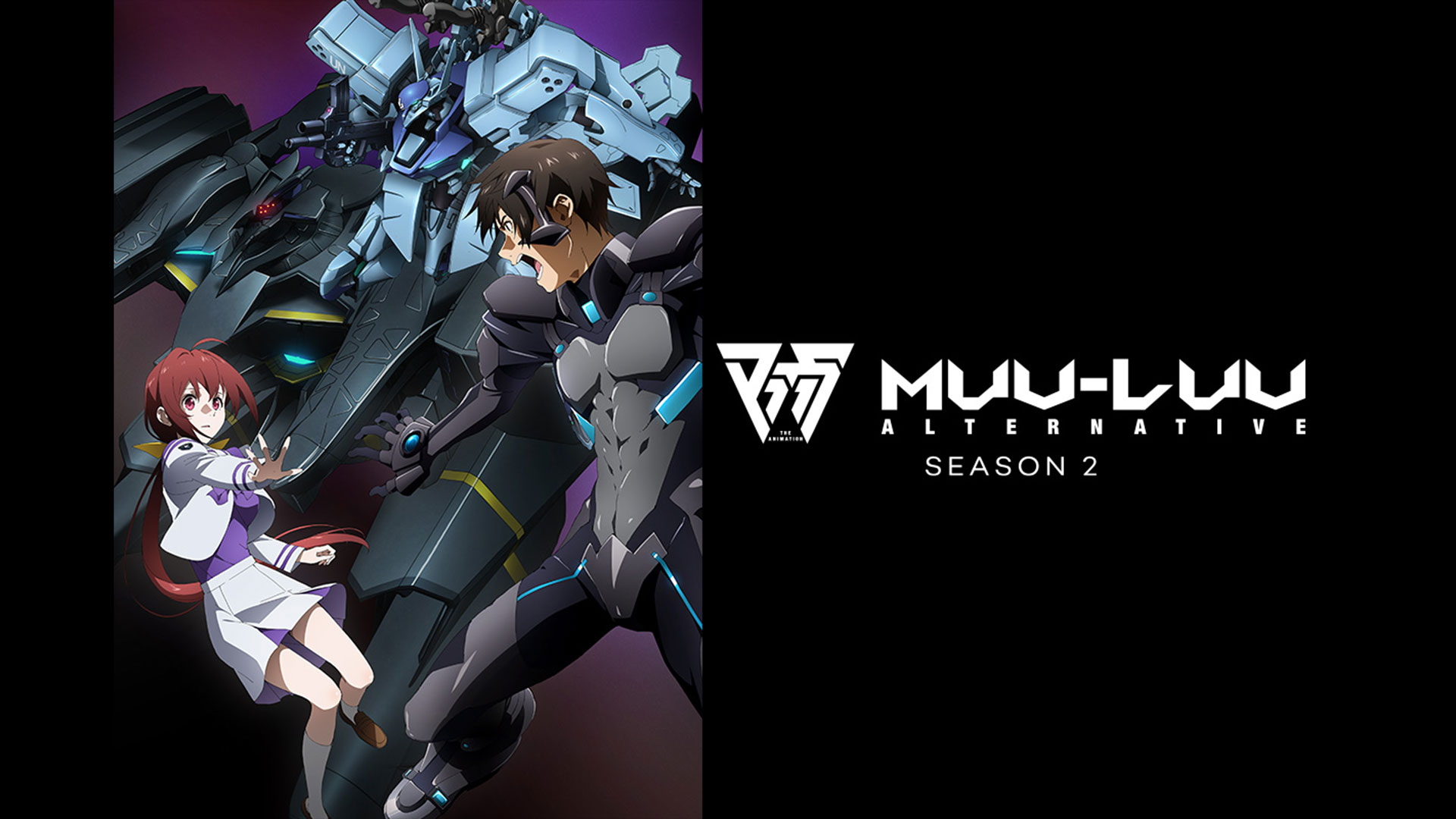
The long-awaited continuation of the mecha isekai of pain. Season 2 of Muv-Luv Alternative is definitely trying to woo you by slamming intense scenes at you – but is it worth it?

One of the most difficult to adapt Mecha series, Muv-Luv Alternative anime started off with a questionable season, but you should still check it out.
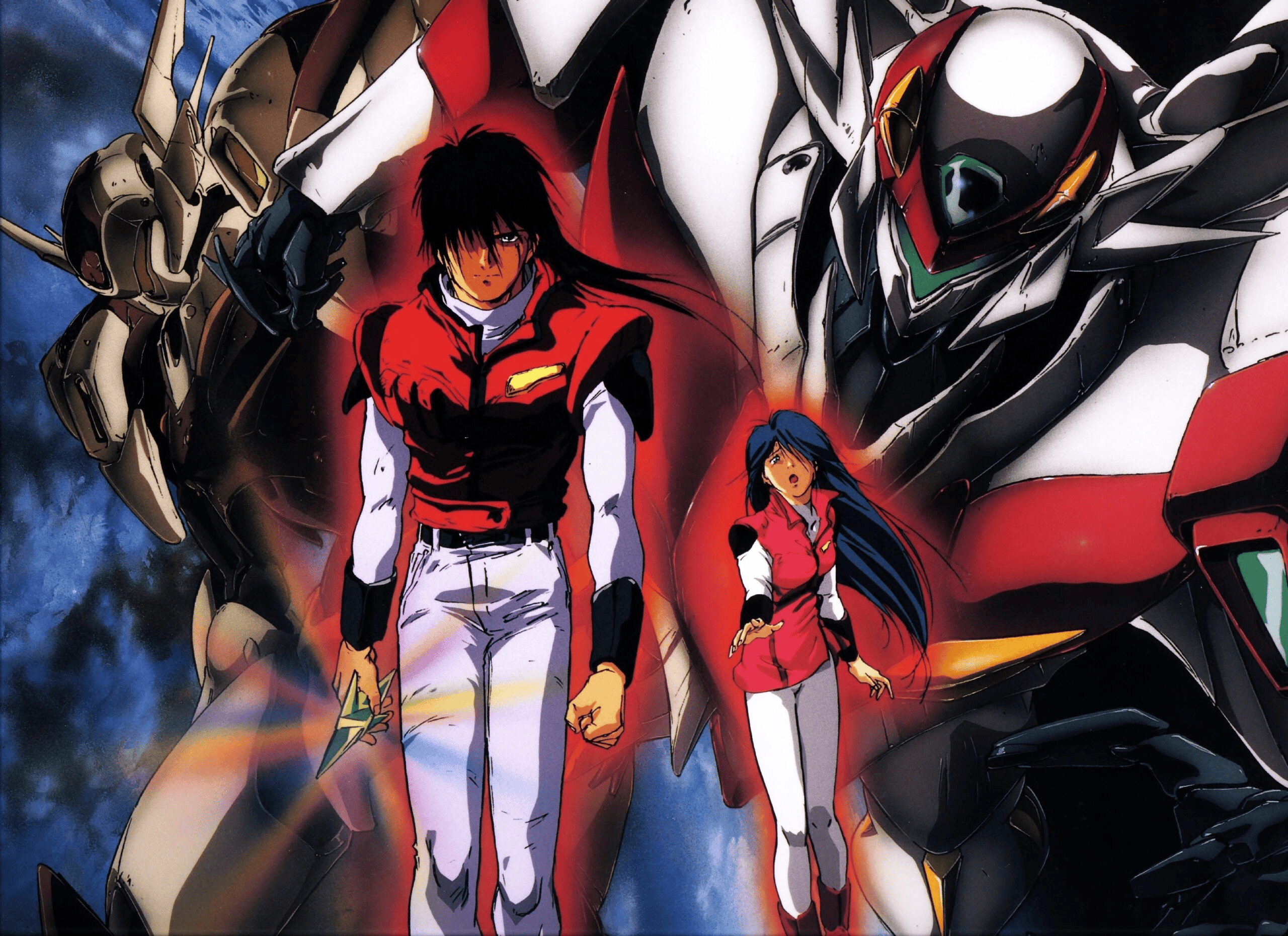
A remake of another Tatsunoko hero. The Space Knight returns with a completely new story, design and brings us on an emotional journey of a tragic hero.

An OVA that took place between the movie and Exodus, Behind The Line shows us how the characters mature throughout the season, with a hint of retrospective nostalgia.

The continuation of the hot-blooded saga, this time filled with emotional drama and even more badass action. A great video game adaptation but not without flaws.

The long awaited legend’s return that satisfy all mecha fan’s longing for a good game. Armored Core 6: Fires of Rubicon is an experience you have to play to believe.

Universes collide as the cast of Gridman and Dynazenon is caught in a dimensional anomaly. But what’s more troubled is Yuuta – who has to become Gridman again with a troubled heart.

When you talk about the most badass mecha, you have to mention SRW OG and Masami Obari. And when these two combine, you get the best SRW anime of all time.
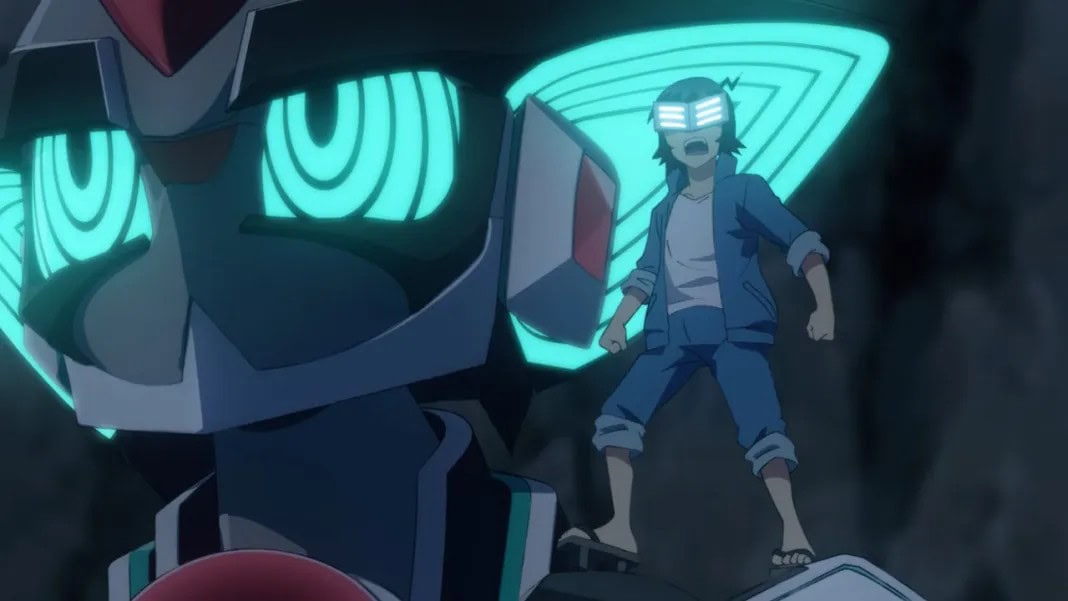
A unique series where the true pacifism versus justice. A bold premise and interesting gimmick make Planet With a very selective series in terms of audience – but it definitely deserves a chance.

From the studio that created Buddy Complex and Valvrave, Cross Ange is another Sunrise’s original that challenges the limit of its audience once more .

What will you do if you’re teleported to a time with giant grotesque monsters? For teenage student Daisuke Doujima, it’s a perfect chance for him to become a hero, and a saviour. But can he?
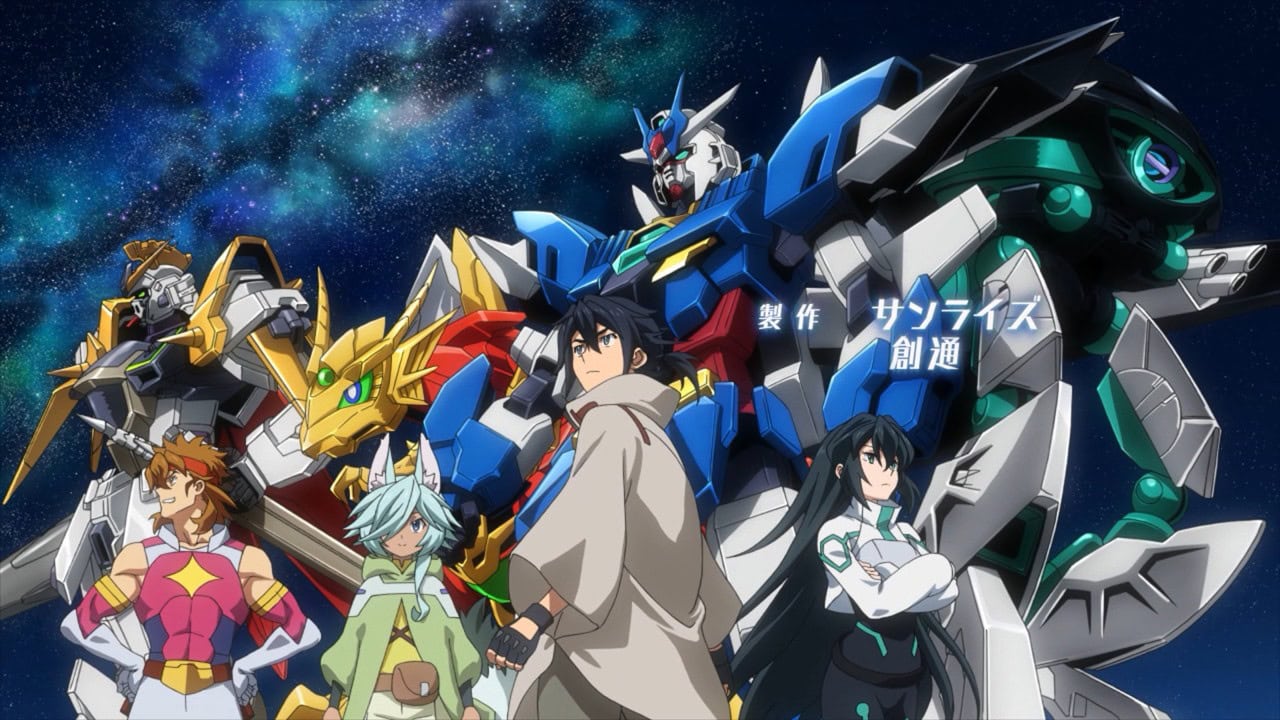
After 2 lukewarm series, Gundam Build rose to form again with Re:Rise. A story with deep characterization for a diverse and likeable cast and awesome Obari action.

Time to go digital! Build series is going full SAO and virtual with Build Divers – a light-hearted series and fun to enjoy without the need to complicate things.

The Super Graviton God is back! And this time the threat just got more vile. But Gravion also receive an upgrade…in true Obari fashion. Let’s see how the sequel holds up!

Following GBF, Sunrise wanted to capture the magic with TRY. However, they fell just short of greatness but still create a series with amazing Gunpla battles.
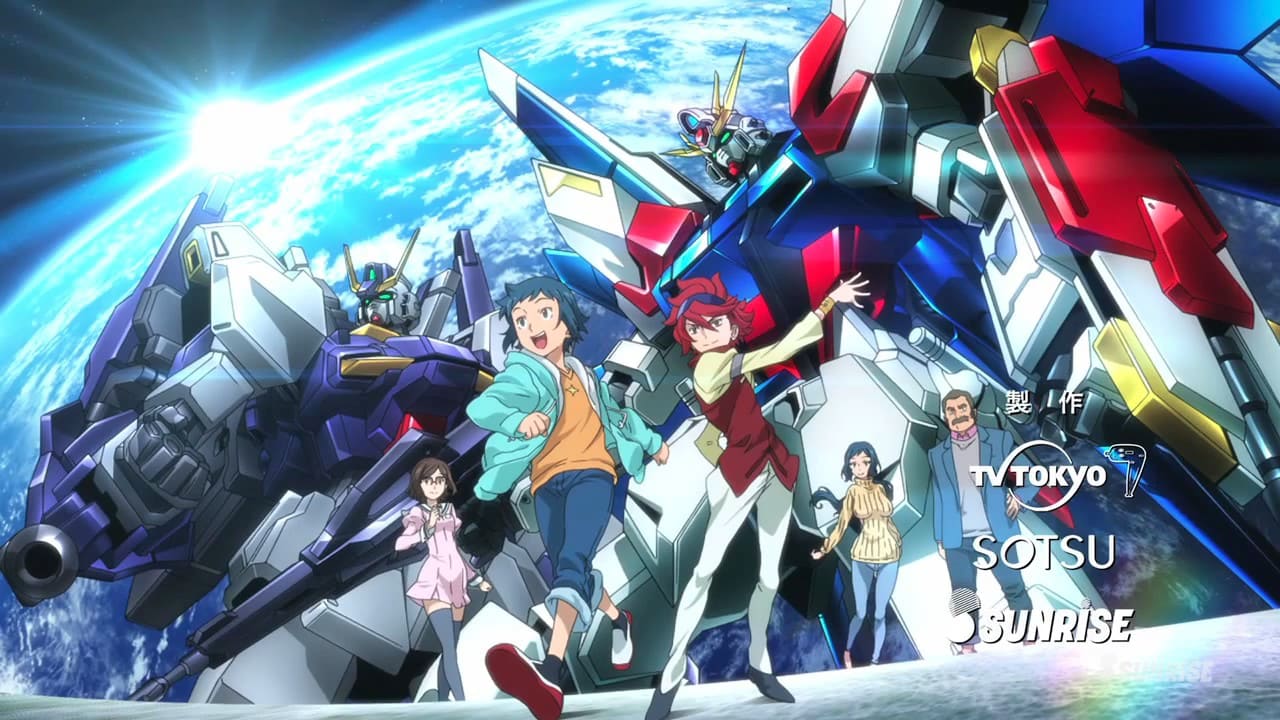
A hobby turned combat sport. Sunrise’s effort to attract new fans turned into a compelling series with gorgeous battles featuring iconic MS from the franchise.

The first animated Build series, Beginning G opened up new venues and excitement for the hobby, with light-hearted yet intense traditional MS battle.

The shortest tv series Gundam ever, but was one of the most popular. G-Witch put Gundam back on the mainstream map, but do fans love it like non-fans do? The answer is quite divisive!

A heavy-weight in Masami Obari’s repertoire. Choujuushin Gravion is average in production quality, yet it is imbued with the spirit of the most badass over-the-top director of all time.

Do you want a Gundam series with a brighter tone but still has banger battles? Then Metal Armor Dragonar is a perfect series for you!

A Super Robot versus Alien mecha series, but this time it’s also infused with the intricacies of human’s most sacred bond: Marriage. Godannar put that relationship to the test!

A series about building regular model kit, and using them to find inspiration in life. A very uplifting and chill series for mecha fans to change their perspective on their hobby.

The sequel to SEED – a series that brought Gundam on top of the radar. Destiny is a sequel that earned both the intense love and hate within the fandoms.

The 3rd Tokusatsu series by Director Anno Hideaki. Shin Kamen Rider revisits the core message of what it means to be a Rider and to fight for justice while putting a modern spin on it.






